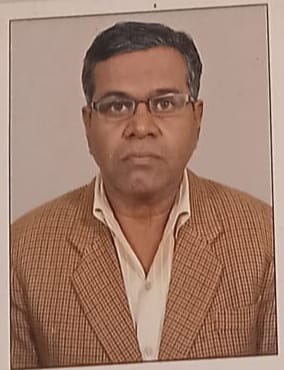Kashmir: A Complex Mosaic of Perceptions
The Hindi phrase “Ek Anar, Sau Bimar” (One Pomegranate, Hundred Sick) aptly describes the complexities of Kashmir Valley. Different stakeholders hold diverse views: India’s ruling party and opposition have distinct perspectives, as do defense and civilian entities. Within India, Hindus and Muslims perceive Kashmir differently, while Indian and foreign media outlets present contrasting narratives. Social media adds another layer of complexity, often amplifying divergent voices. Foreign countries and their media also have varied perceptions, with Muslim-dominated nations holding unique views. This multiplicity of perspectives echoes the parable of the elephant and the blind men, where each individual forms a narrative based on their limited understanding, while the truth lies in the entirety. This piece aims to break down false narratives and present a sincere account, inviting readers to form their own informed opinions.
SWARG KE DAVEDAAR
CONTENDERS OF HEAVEN
PART - 1HISTORICAL BACKGROUND OF KASHMIR
History is often a chronicle of wars, and war has historically been seen as the inevitable destination of human civilization. But why does war happen? The primary reason lies in the contradiction between limited resources and unlimited human aspirations. When the demands of various stakeholders—primarily the majority populations—exceed the supply of essential resources, conflict becomes inevitable. Throughout history, wars have been fought mainly for three reasons: acquisition of resources, control over territory, and religious differences.
In ancient India, during the period of Gautama Buddha (circa 653 BCE to 480 BCE), the subcontinent was home to just around 2 crore (20 million) people. Back then, the region was blessed with abundant natural resources and a relatively low population density. Conflicts were rare and localized. However, as populations grew and the world evolved, regions with strategic and resource-based advantages began to attract the attention of empires and invaders.
Kashmir, one such strategically significant region, stands at the crossroads of four major civilizations and powers. It opens toward India in the south, China in the east, Russia (through Central Asia) in the north, and Afghanistan and Iran in the west. Its location makes it a geopolitical hotspot. The region is also rich in resources—fertile land that produces world-renowned saffron (keshar), flowers, and dry fruits. Its traditional handicraft industry, particularly carpet weaving, has a global reputation. Moreover, Kashmir is blessed with abundant water resources, with rivers like the Jhelum and its tributaries originating in the region and feeding into vital river systems like the Indus and Sutlej.
The formation of Jammu and Kashmir as a princely state began under the rule of the Dogra Rajputs, a Hindu dynasty based in Jammu. Following the defeat of the Sikh Empire in the First Anglo-Sikh War, the 1846 Treaty of Lahore was signed between the East India Company and the defeated Sikh rulers. As part of this arrangement, Gulab Singh, the Dogra ruler of Jammu, paid ₹ 75 lakh to the British and acquired the territory of Kashmir. Over the following years, he expanded his dominion—buying Gilgit and Baltistan from Afghan influence in 1840 and acquiring Ladakh from the Buddhist Lama in 1850. Thus, the princely state of Jammu & Kashmir was formed, incorporating diverse regions, religions, and cultures.
The social structure of Jammu and Kashmir under Dogra rule was marked by tension. The Hindu king and his officials often carried out discriminatory policies against the Muslim majority, who were mostly laborers, artisans, and peasants. The resulting socio-economic disparity and political exclusion created deep resentment among the Muslim population.
This discontent led to the rise of Sheikh Abdullah, a charismatic leader born in Baramulla to a carpet trader. Educated at Aligarh Muslim University, Sheikh Abdullah returned to Kashmir only to find no opportunity in the royal court. Influenced by secularism and committed to social reform, he launched the All Jammu & Kashmir Muslim Conference in 1931 to represent the oppressed Muslim masses. His party was initially crushed by the forces of Maharaja Hari Singh, but Abdullah persisted. In 1938, to unite both Hindus and Muslims, he renamed his party the National Conference, aligning with the Indian National Congress’s secular ideology. This earned him the support of leaders like Jawaharlal Nehru and Mahatma Gandhi.
After Indian independence in 1947, four main claimants emerged in the Kashmir dispute: Muhammad Ali Jinnah wanted Kashmir for Pakistan under the two-nation theory; the Indian National Congress sought its integration into secular India; Maharaja Hari Singh desired independence; and Sheikh Abdullah supported a democratic, secular future possibly aligned with India. Lord Mountbatten, the British Viceroy, rejected the idea of an independent Kashmir, insisting that the Maharaja must choose either India or Pakistan.
Caught between conflicting choices, Hari Singh hesitated. Merging with India meant losing his royal privileges under a democratic system, while merging with Pakistan, a Muslim-majority country, posed a threat to the Hindu ruler and minority communities. In August 1947, he signed a Standstill Agreement with both dominions, ensuring that defence, communications, and foreign affairs would remain as they were. It was understood that whichever country violated this agreement first would forfeit Kashmir’s allegiance.
To be continued...... References:
1.India After Gandhi by R.C.Guha
2.Kashmir Behind Vale by M. J.Akbar.
3.Kashmir Dispute 1947 , Version of A.G.Noorani.
4.UPSC Educator.







